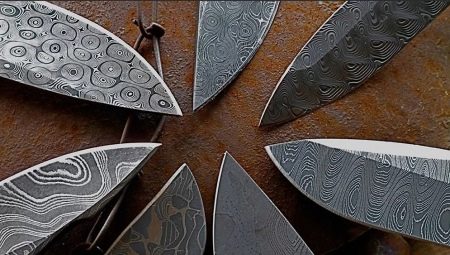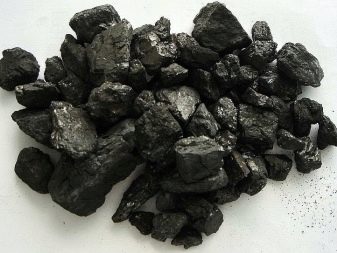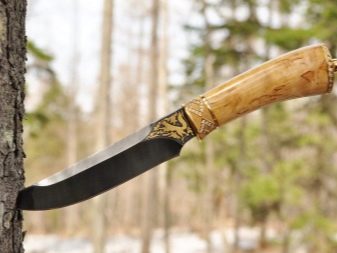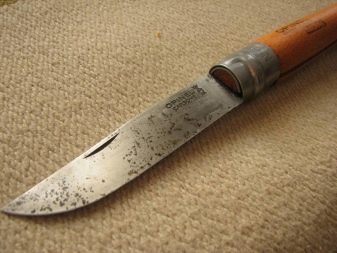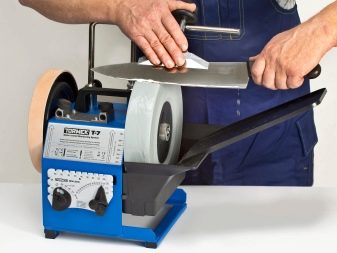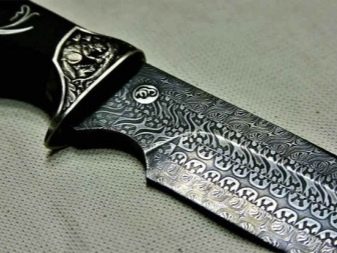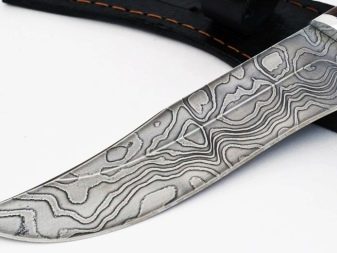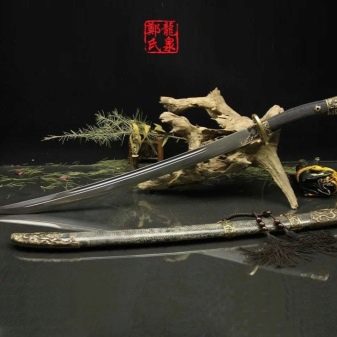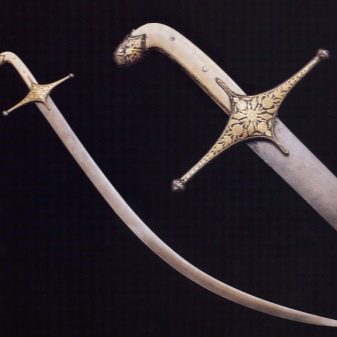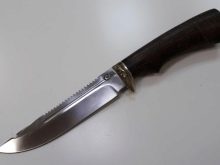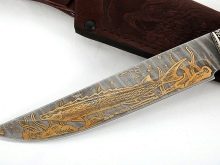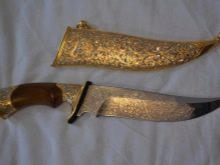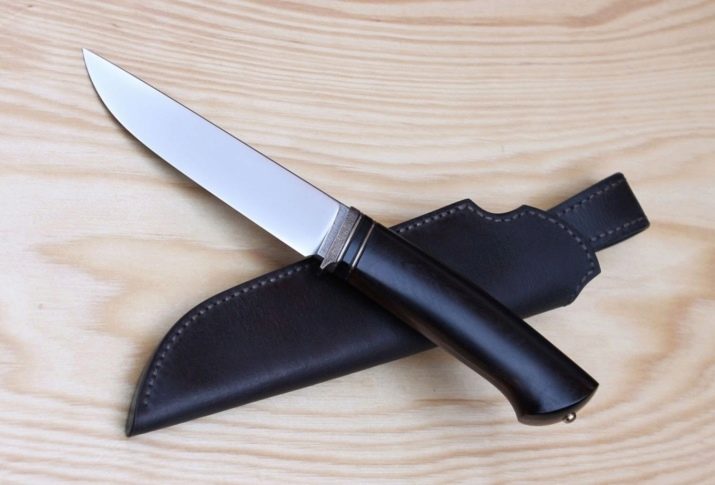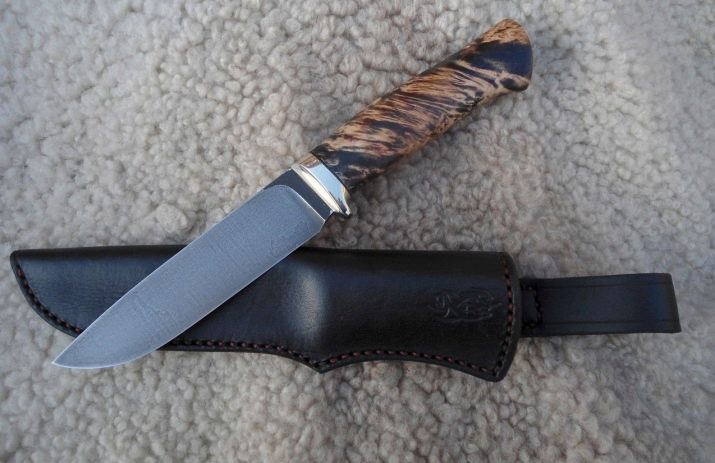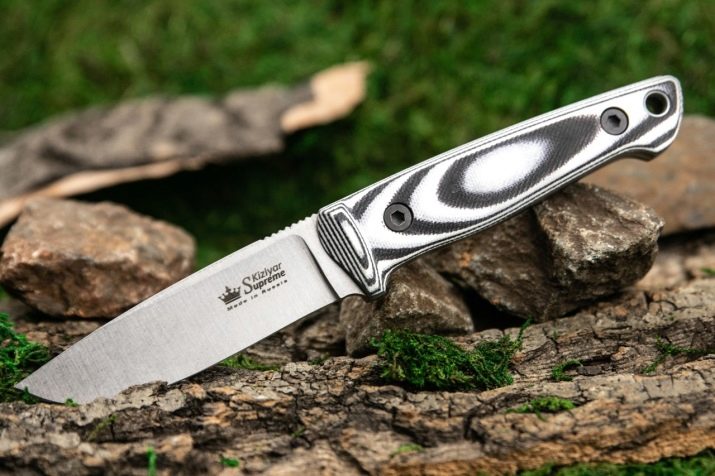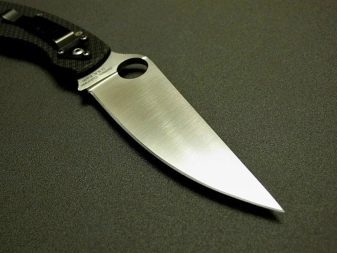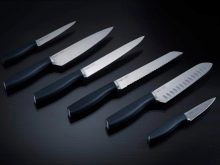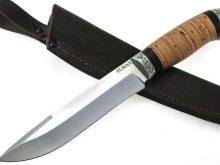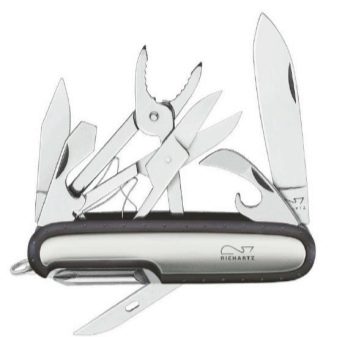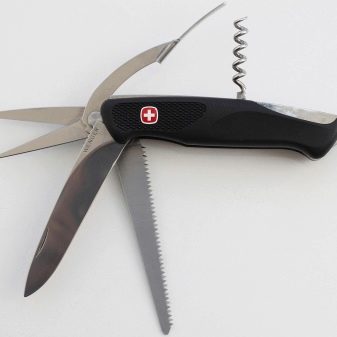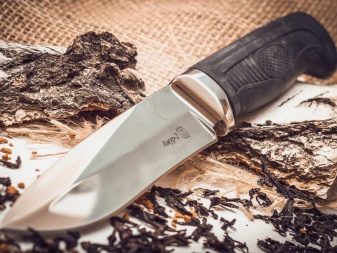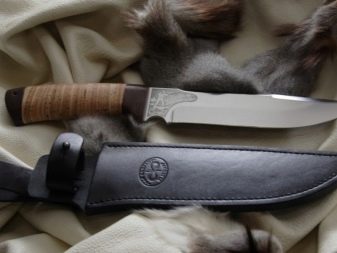There is no unequivocal answer to the question which steel is more suitable for the production of knives. It all depends on the purpose for which the knife is intended. Even such “titled” steels like Damascus and damask steel do not always cope well with the assigned tasks. Modern alloys often have better characteristics and are able to perform a variety of functions.
Features
The basis of any type of steel consists of two elements - iron and carbon. The latter is responsible for the level of hardness. The higher the carbon level in the alloy - the harder the product will be. The best indicator is 0.7%, but there are instances with a higher level of this element. The upper limit is set at 2.14% - if you exceed this value, you get iron, which, of course, is not suitable for the manufacture of any blade. Additional properties provide additional elements included in the steel.
- Manganese. This element allows you to improve the quality of the calcination of the metal, to form its structure, as well as to increase the strength.
- Chromium protects steel from corrosion, but its excess will make the metal brittle.
- Nickel also gives corrosion resistance and makes the blade more durable.
- Molybdenum performs several tasks. It increases strength, ability to annealing, makes the metal more elastic and less brittle.
- Vanadium in the composition of the steel is responsible for the level of strength and hardenability of the blade.
- Silicon It is considered a universal additive that can improve the different characteristics of the metal.
In addition to these elements, which are most common, tungsten, nitrogen, sulfur and some other components may be included in the composition of the alloy.
It should be understood that adding any component only makes sense until its concentration exceeds the maximum allowed. If this happens, the steel will simply be damaged, it will lose all of its original properties.
Despite the importance of the composition, it does not play a crucial role. The final quality of the metal also depends on heat treatment and hardening. It is the totality of all these points that determines the presence of certain characteristics, among which the following are key.
- Hardness, that is, the ability of the blade to withstand significant external loads.
- Wear resistance.
- Strength. This indicator of non-professionals is sometimes confused with hardness, using two terms as synonyms. However, the two properties have completely different meanings. The solid blade withstands heavy loads without deformation, and the durable is resistant to chipping and cracking. In addition, the level of strength and hardness are interconnected - with an increase in one indicator, the second invariably decreases.
- Corrosion Resistance. Another important indicator. Wherever a knife is used - in the kitchen, on a camping trip or on a hunt, it often comes into contact with water (and hunting water also with blood), which has a negative effect on the working properties of the blade. Therefore, "anti-corrosion" refers to one of the most important characteristics.
- Ability to hold sharpening.
- Easy sharpening.
It is impossible to select a brand in which all these qualities would be present. Each of them has certain properties, depending on the composition. Moreover, the greater the number of properties inherent in the knife, the higher its price.
Species comparison
Of all the varieties, the most famous are two - damask and damask steel. Even very distant from the world of knives, people have heard of these alloys, products from which have long been considered the most reliable, durable and durable. In addition, they have an attractive appearance due to the peculiarities of the composition and hardening, which was of additional importance to buyers. But not only the visual appeal made Damascus and damask blades so popular. These types of steel possessed and good performance, perhaps the best for its time.
So, damask steel, which included complex carbon compounds and small fractions of iron, has high strength, good cutting ability and flexibility. In addition, it is distinguished by a specific pattern, which is formed as a result of the hardening of the blade, and a special fibrous structure. A knife made of such a metal is a reliable and durable tool, it can be used both in the kitchen and in hunting or fishing.
The Damascus version is based on the same components as any other steel — carbon and iron. Special elements added to the composition of the alloy give particular flexibility and durability to the blade. After heat treatment, the surface of the blade made of this steel is covered with an interesting, chaotic pattern, which is the result of the mixing of the layers.
These two types of steel can be called legendary. For a long time and to this day a special attitude has been maintained towards them, and the matter is not only in the “technical characteristics”. With damask metal, that Damascus metal has a rich history, they are mentioned in Russian epics and ancient Arabian tales. Yes, it is possible that in those times such blades were the most advanced weapons, but now the situation has changed somewhat.
Nowadays, it cannot be said that Damascus or damask steel is the strongest in the world. Modern technologies and updated compositions allowed to create alloys that are not inferior, and sometimes superior in their characteristics to the famous blades. For example, Stainless steel 95x18 or 100x13h is almost universal, it is able to meet 98% of consumer requirements.
In addition, like any other metals, Damascus and damask have not only their advantages, but also disadvantages. So, the first of them is subject to corrosion. To protect the blade from rust, you need to make efforts - to wash thoroughly and wipe dry after use, cover with special compounds, store in a dry place. The damask knife is quite difficult to grind in “field conditions” - it will take time and effort, and in addition, you need to find the right tool for sharpening. The first stone that you got will not cope with this task.
Today, these two types of blades rarely perform any utilitarian function. They are often purchased not as a working tool, but as a decoration or as an exhibit in a collection of weapons. For practical use choose knives made of modern alloys.
Knives with titanium coating have proven themselves well. Such blades are distinguished by black or golden blade color. They have high durability (up to 90 HRC on the Rockwell scale), additional protection against corrosion, keep sharpening for a long time. An important fact is that with increased blade hardness the level of strength does not decrease. This is the case when you can get "all at once" - and the hardness and strength.
Top Marks
Modern metallurgy offers a large number of alloys with a variety of properties. A person far from this area, hardly distinguishes one species from another, and does not seek to distinguish. He wants to buy a quality knife made of good steel, which will last a long time and will cope well with the tasks set for him. Today the most popular alloys are the following.
- M390. This is a premium stainless steel, representing the elite price group.It is wear-resistant, durable, not afraid of exposure to external factors, is not susceptible to the appearance of rust and well keeps sharpening.
- ZDP189. Also applies to elite brands. Differs in the high hardness and plasticity.
- CPM S35 VN. In the manufacture of this brand of powder steel with the addition of niobium is used - it is a brilliant metal of gray-silver color. The knife from this alloy has a high sharpness and strength.
- ATS-34. This brand comes from Japan, it is characterized by high sharpness of sharpening and strength. The disadvantages of the metal include corrosion susceptibility.
- VG-10. This steel is very similar in its characteristics to the ATS-34. The composition includes a large amount of chromium and vanadium - elements that increase the strength of the blade.
- 440C. This brand is in the greatest demand not only in Russia, but also all over the world. The composition includes a large amount of chromium and carbon. The knife from such an alloy is easy to grind and has good anti-corrosion properties.
- AUS-8. Another steel made in Japan. Of the benefits - insensitivity to corrosive processes, but the minuses are much more, including poor retention sharpening.
The rating does not include all known steel grades. It lists those that are most in demand and trusted by consumers. In Russia, 440C steel blades have gained wide popularity due to their good technical characteristics and reasonable price.
Knives from alloys of the middle price segment are purchased most often. Too expensive models are not affordable for everyone, and cheap models cause mistrust (often not without grounds). In addition, not always the high price means good quality of the blade. It is better to pay attention to the working properties of the alloys and their composition.
In addition to this steel 440C, several other types can be distinguished, such as BG-42, AT S-34, which contain small amounts of chromium, but as much as 4% molybdenum. These alloys are referred to as ball bearing stainless. They possess high wear resistance that distinguishes them from other brands. The d2 alloy, beloved by American manufacturers, has proven itself well. Due to the combination of qualities, this steel is well suited for the production of knives for almost any purpose.
How to choose?
The main selection criterion is the scope. From where, in what conditions will use the knife, depends on the list of necessary qualities, which it should possess, and the type of steel. For example, a sufficient level of strength and the ability to hold a knife for a long time is important for a kitchen knife. For a skin tool, it also matters how fast and easy it can be to sharpen.
For the same hunting knife, its cutting ability is important. Carbon, damask, damask, powder, alloyed steel possesses this property. There are several basic criteria that are equally important for blades of any purpose. These include:
- hardness.
- strength.
- corrosion resistance.
The high level of hardness protects the blade from external influences and deformation. Good strength makes the knife resistant to chipping or cracking. The blade with a high index of strength under load will bend, but it will not break. Anti-corrosion properties make the knife more durable - because water or blood, with which it often has to "meet", do not have a harmful effect. As for manufacturers, here we can single out the following companies that have proven themselves in the global market:
- Solingen (Germany);
- Wenger (Switzerland);
- "Winkison" (England).
Positive feedback and popularity gained also knives Finnish, American, Swedish and Japanese production. Among domestic manufacturers occupy a special position products of Kizlyar and Zlatoust plants. Modern technologies that are used in these enterprises have allowed to create high-quality products that are not inferior (and sometimes superior) in their characteristics foreign analogues.
However, not all qualities of the alloy depend on its composition and production conditions. Properties such as flexibility, fragility, softness, the ability to quickly become blunt are directly dependent on the heat treatment of the material.
Some consumers attach great importance to the sharpness of the knife. But this is not the most important thing. Much more important property is the wear resistance of the blade, which depends on the amount of carbon in the composition.
It is impossible to name any kind of universal steel, the knife from which will have all the necessary qualities. It all depends on the scope of use. That it determines which characteristics of the blade will be key. Hike, hunting, fishing or domestic needs - in each case the different characteristics of the knife are crucial.
Perhaps the only thing you should not pay attention to when choosing a knife is its value. It is not always an indicator of the quality of the blade. Yes, and the first knife you like to buy is also not worth it. It is better to spend time, go around several shops, look at reviews on the manufacturer's website, compare prices - and after that make an informed decision.
Next, watch the video about what became used for knives.
